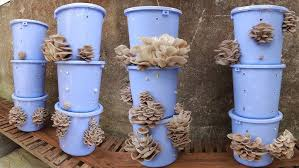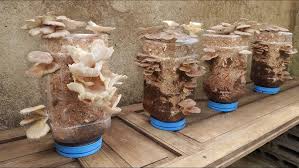How to Grow Mushrooms at Home Using PVC Water Pipes
Cultivating mushrooms at home using PVC water pipes is a creative and efficient approach that combines innovation with simplicity. This method mirrors the bucket technique but optimizes aeration and drainage through strategically placed holes in the pipes. Follow this step-by-step guide to set up your own mushroom-growing system and enjoy fresh, homegrown fungi.
Materials You’ll Need:
- PVC water pipes (various diameters for different mushroom types)
- Drill with multiple drill bit sizes
- Straw (chopped into 2–4 inch pieces)
- Mushroom spawn (seeds)
- Large pot for boiling water
- Clean cloth or pipe covers
- Watering can or spray bottle
Step-by-Step Instructions
Step 1: Preparing the PVC Pipes
Begin by selecting PVC pipes of your desired size. Use a drill to create evenly spaced holes along the length of the pipes. These holes provide essential ventilation and serve as points for mushrooms to grow.
Step 2: Preparing the Straw
Chop straw into small pieces (2–4 inches). This size promotes efficient layering and even colonization.
Step 3: Sterilizing the Straw
Place the chopped straw into a large pot of water and boil it to sterilize. This step is crucial for eliminating contaminants that could hinder mushroom growth. Once boiled, allow the straw to cool to room temperature.
Step 4: Filling the Pipes
Layer the cooled straw and mushroom spawn inside the PVC pipes. Start with straw, add a layer of spawn, and repeat until the pipe is nearly full. Ensure the spawn is evenly distributed for consistent colonization.

Step 5: Incubation
Cover the open ends of the pipes with a clean cloth or caps to maintain a dark, humid environment. Position the pipes in a cool, shaded location with temperatures between 70°F and 75°F (21°C to 24°C). During this phase, the mushroom mycelium will spread throughout the straw.
Step 6: Moisture Maintenance
To support growth, keep the straw moist but not overly wet. Use a watering can or spray bottle to mist the pipes daily. Be cautious—excessive moisture can lead to contamination.
Step 7: Monitoring Growth and Harvesting
After approximately 21 days, you’ll notice small mushroom pins emerging from the holes. Continue maintaining moisture as they develop. Harvest mushrooms by gently twisting and pulling them from the pipe once they reach your preferred size.
Step 8: Sustained Harvesting
Mushrooms will grow in cycles, allowing for multiple harvests. However, prevent spore release, which could reduce future yields.
Tips and Precautions
- Sterilization is Key: Properly sterilize materials to avoid contamination. Even a minor lapse can affect your yield.
- Monitor Conditions: Mushrooms thrive in specific temperatures and humidity levels. Adjust your setup as needed.
- Seek Expertise: If you’re unsure about techniques or mushroom varieties, consult local mycology experts for advice.
Why Use PVC Pipes for Mushroom Growing?
PVC water pipes offer excellent drainage, are space-efficient, and can be easily customized. This method works well with various mushroom types, giving you the freedom to experiment and enjoy a reliable source of fresh, homegrown mushrooms.
Enjoy the satisfaction of growing your own mushrooms while exploring new methods and varieties. With attention to detail and care, your DIY setup can yield delicious results!
This revised version ensures clarity, engagement, and detailed insights for an educational and enjoyable read!
